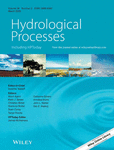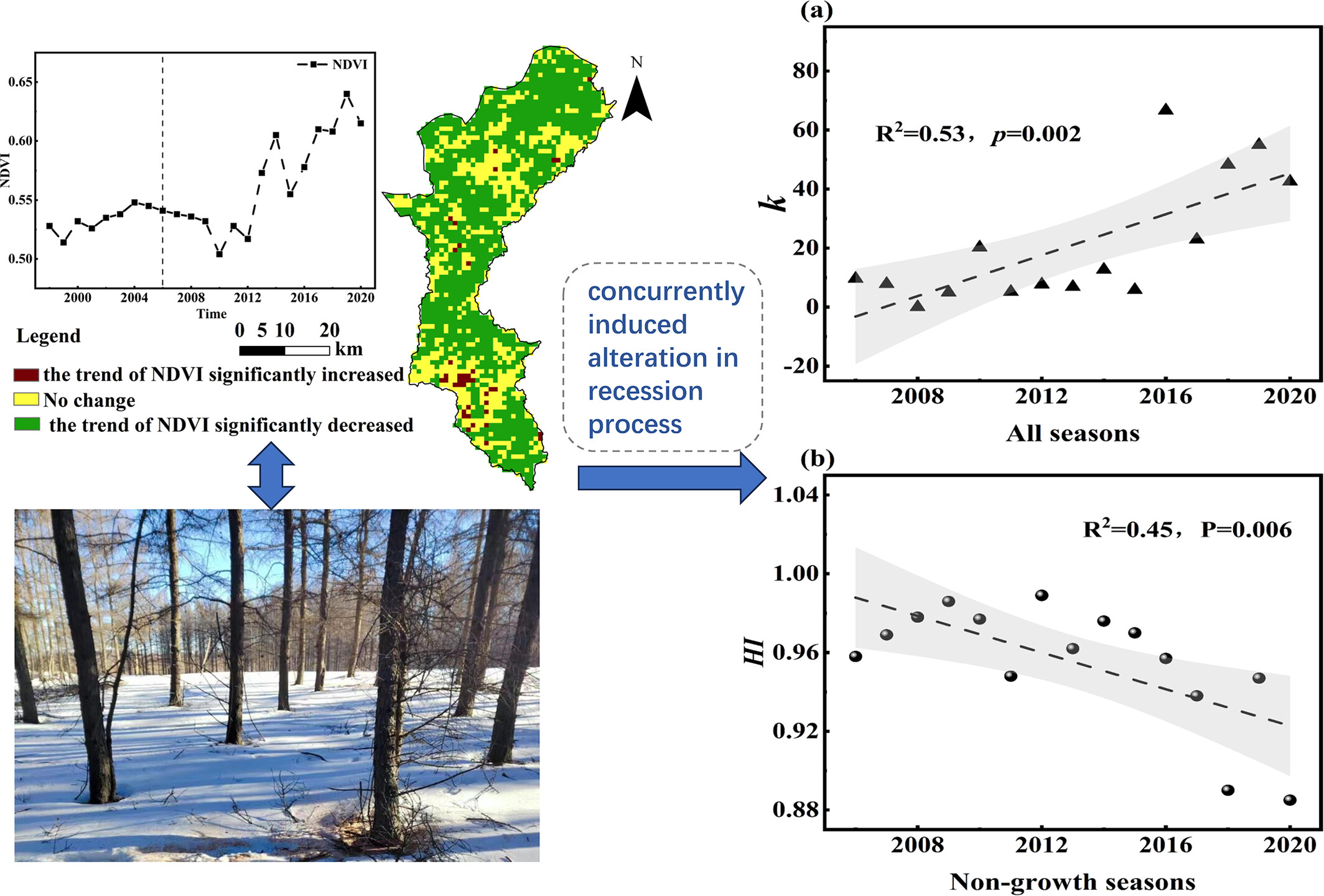Journal list menu
Export Citations
Download PDFs
ISSUE INFORMATION
COMMENTARY
Hydrological Whiplash: Highlighting the Need for Better Understanding and Quantification of Sub-Seasonal Hydrological Extreme Transitions
- First Published: 19 March 2025
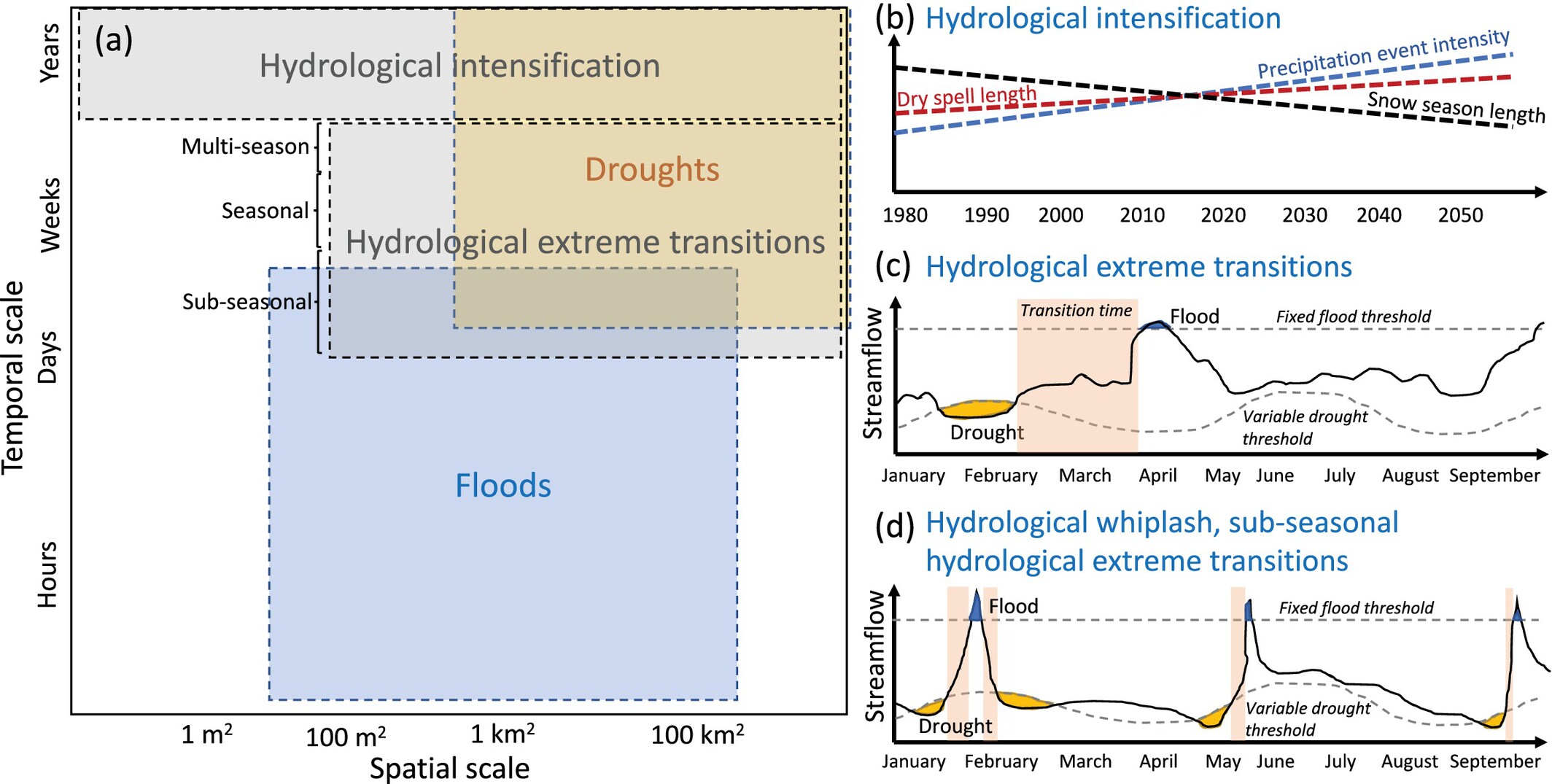
Hydrological whiplash, or the sub-seasonal transition between hydrological extremes, has broad implications for water resource management, ecosystems, infrastructure, and human society. As this phenomenon of hydrological intensification gains more attention, there is a focused need for research that can strengthen our understanding of these transitions and guide approaches for water management.
RESEARCH ARTICLE
Analytical Model of Groundwater Flow in a Rectangular Domain for Spatiotemporally Distributed Recharge
- First Published: 05 March 2025
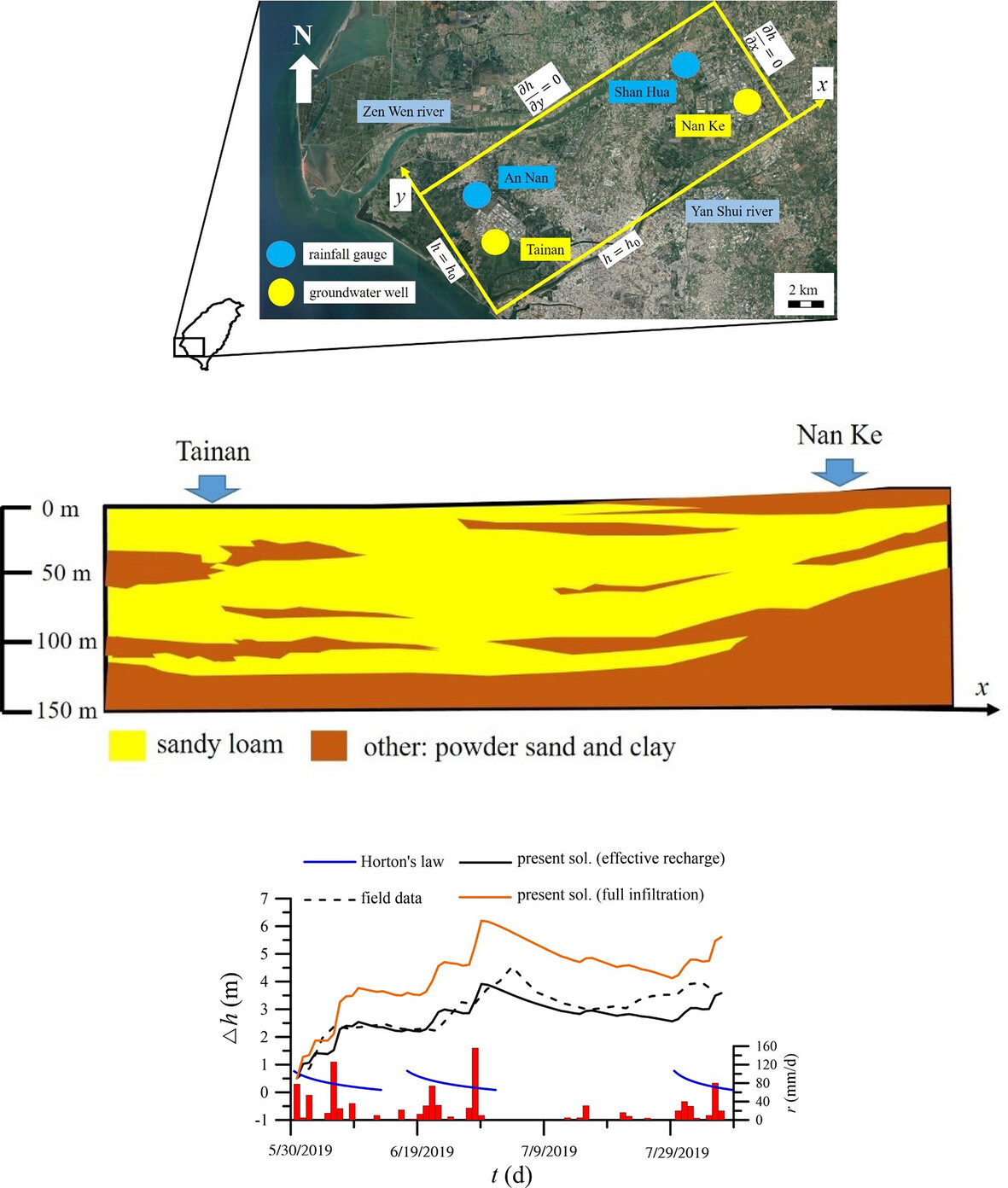
The analysis examines aquifer properties and recharge distribution's impact on groundwater levels, offering insights into groundwater behaviour. Horton's equation aids diffuse recharge estimation, aligning estimated and field data from Taiwan. Overall, the study offers an analytical solution and model for the anisotropic aquifer groundwater flow, validated via simulations and field data, enhancing understanding in the area.
Evapotranspiration Partitioning Using Flux Tower Data in a Semi-Arid Ecosystem
- First Published: 20 March 2025
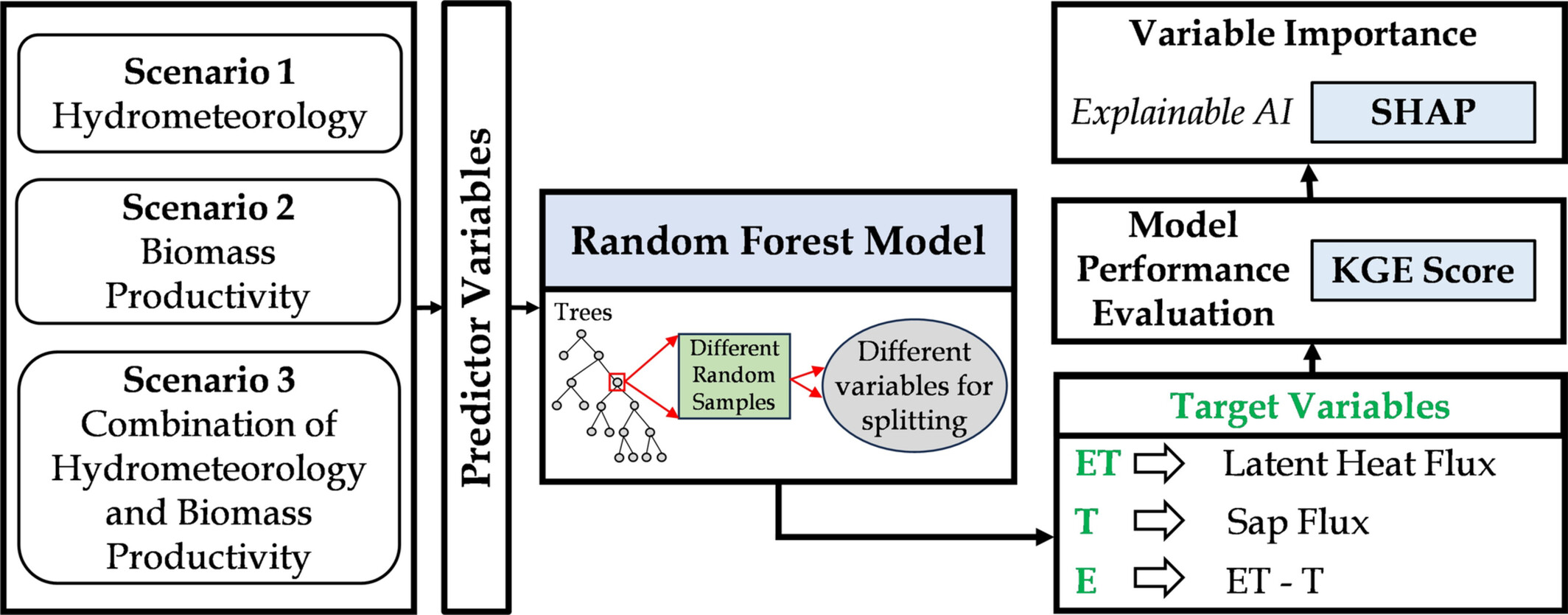
The inclusion of biomass productivity variables alongside hydrometeorological variables improved the predictions of ET and its components. Soil water content, soil temperature and friction velocity primarily controlled evaporation, while vapour pressure deficit, soil temperature and soil water content were the primary controls for transpiration. ET is influenced by soil water content, net radiation and net ecosystem exchange.
Hidden Features: How Subsurface and Landscape Heterogeneity Govern Hydrologic Connectivity and Stream Chemistry in a Montane Watershed
- First Published: 13 March 2025
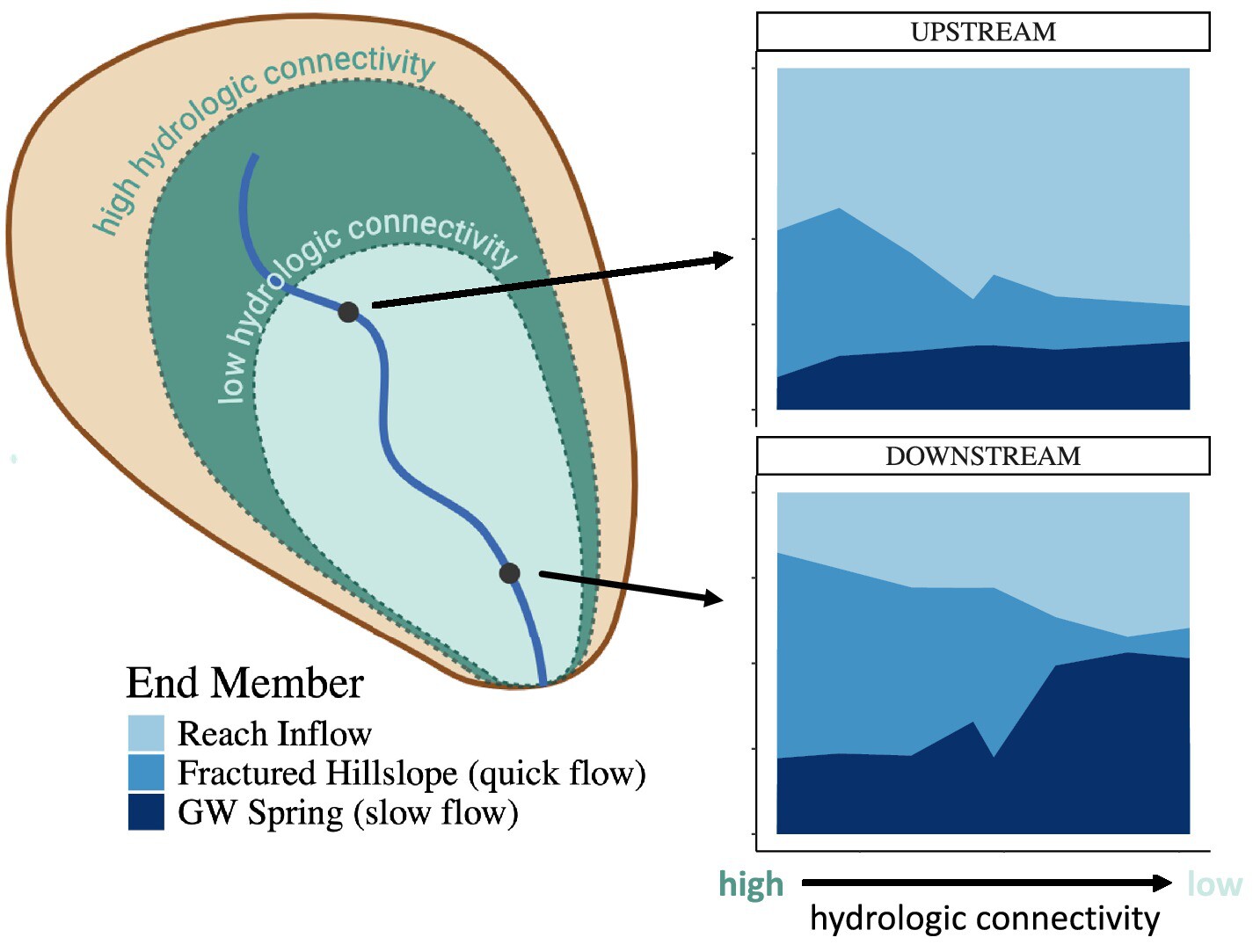
Seasonal declines in hydrologic connectivity led to shifts from quick to slow response groundwater contributions throughout the summer. Spatial heterogeneity in subsurface storage features controls the location of quick and slow response groundwater contributions to stream flow, such that stream hydro-chemical response to changes in hydrologic connectivity was variable along the reach.
Influence of Hydrogeological and Climatic Conditions on Piston Flow in Karst Aquifers Using Statistical Approach
- First Published: 26 February 2025
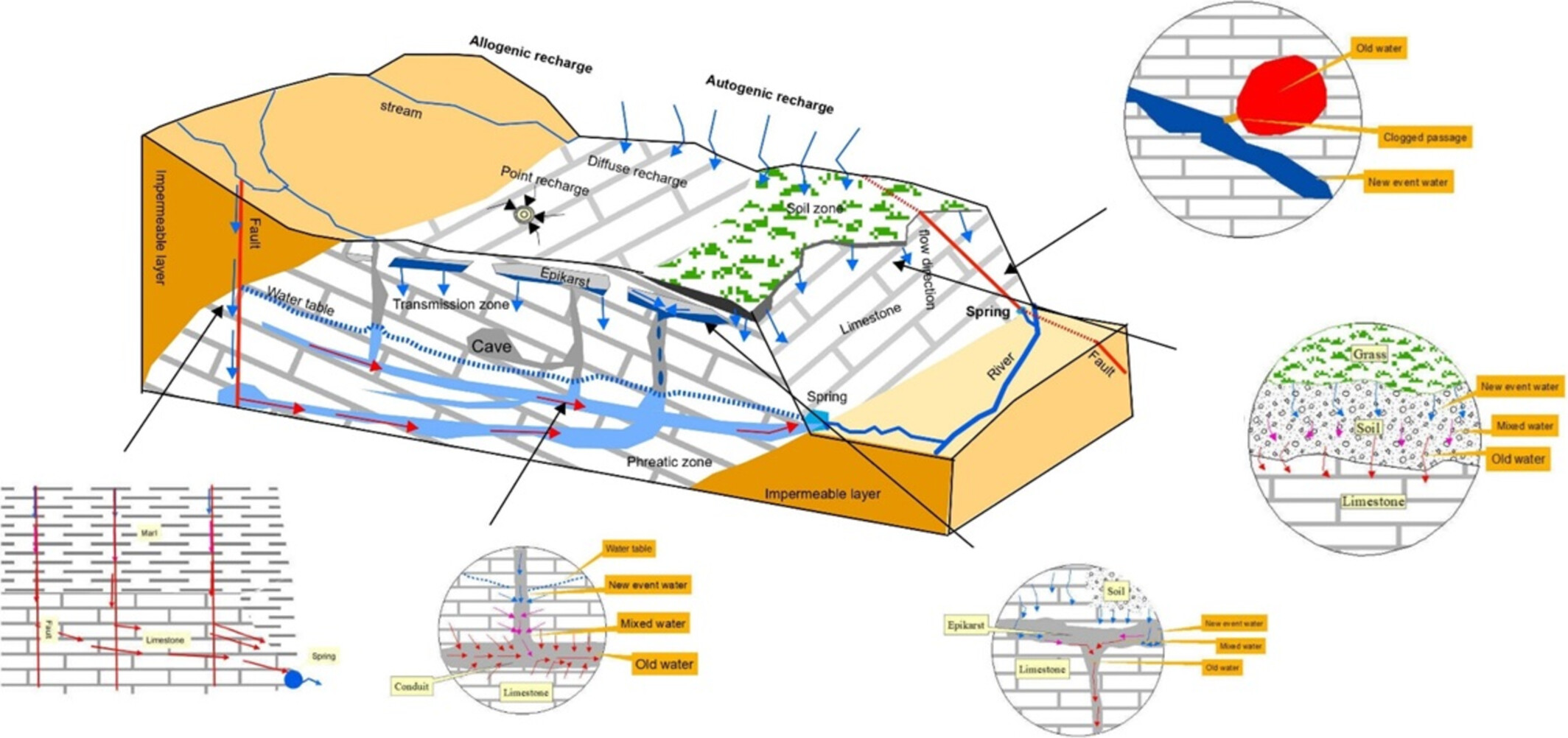
The mobilised stored water is most likely found in the phreatic zone, but could also be present in the soil or epikarst zone. The occurrence of piston flow depends on the storage capacity of the matrix as well as the development of conduit systems that do not significantly weaken the hydraulic function of the matrix. The typology of hysteresis in piston flow is primarily influenced by the presence of pre-event water or a mixture of pre-event and event water.
Injected Tracer Reveals Differences in Water Transport Rate, Residence Times and Mixing Dynamics in Tree Species of Contrasting Water Management Strategies
- First Published: 26 February 2025
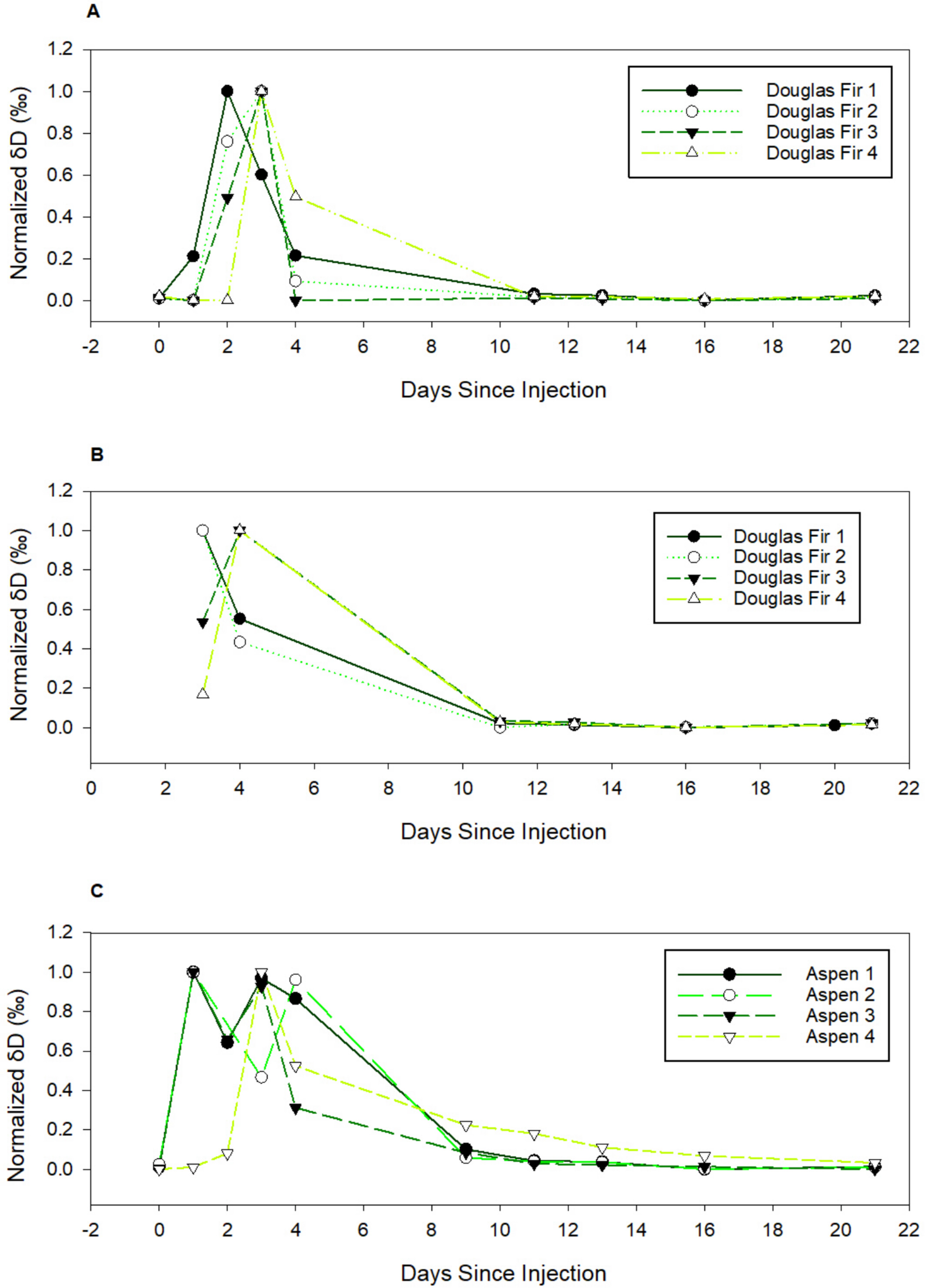
Using a stable isotope tracer, we report that the residence time of water in Pseudotsuga menzeisii was 7.5 days, and 9.5 days in P. tremuloides trees (20–30 cm DBH). The double pulse of tracer in canopy leaves provided evidence of preferential pathways of water movement in P. tremuloides trees. Our tracer data suggest that water flow is piston-flow-like in P. menzeisii and is ‘complex’ with some preferential flow paths in P. tremuloides.
Assessing the Spatiotemporal Applicability of IsoGSM2 for Simulating Precipitation Isotope Compositions: A Multi-Timescale Analysis
- First Published: 26 February 2025

In terms of the correlation between δ18OO and δ18OM, isoGSM2 demonstrated good performance in the northern part of Oceania, southeastern Asia, central Europe, eastern North America, Greenland and northern South America across all temporal scales, and the correlations at the other stations vary depending on the timescale. The model tends to show good performance with high correlation in the rainy season (RSM, RSA) at most sites, and it is noted that the annual variations at some sites can also be reproduced.
Hydrologic Mechanisms for 2022 Yellowstone River Flood and Comparisons to Recent Historic Floods
- First Published: 13 March 2025
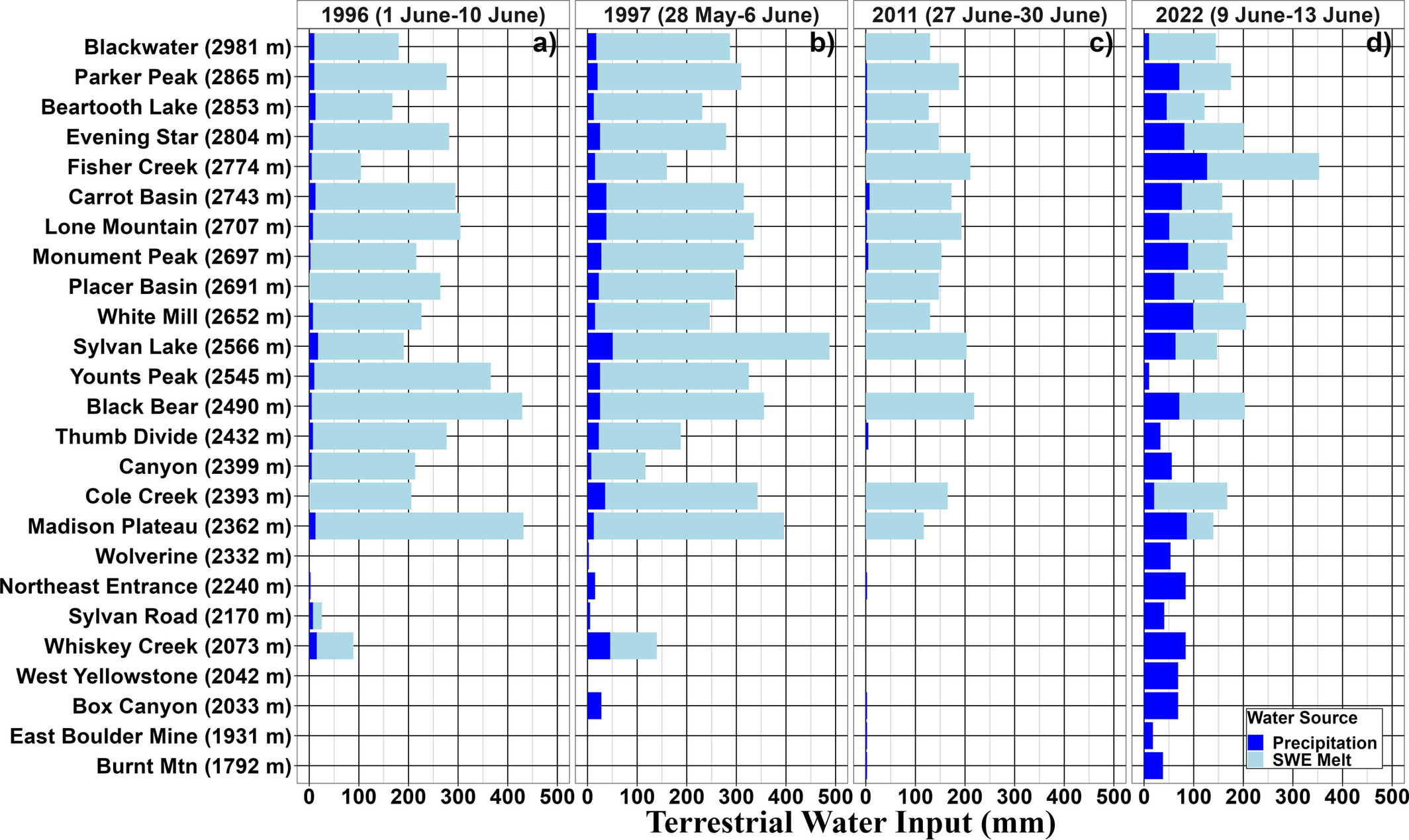
The results indicate the historic June 2022 flood for the upper Yellowstone River and nearby tributaries was a result of a rain-on-snow event. The hydrologic mechanisms that generated this flood were a combination of higher-than-average late-season snowpack and a large precipitation event with substantial atmospheric moisture sourced from the Pacific Ocean. Compared to other flood events in the last 30 years, the 2022 flood was the highest peak flow in nearly 100 years of streamflow records for the Yellowstone River.
Numerical Modelling of Groundwater Flow in an Urban Aquifer Under Extensive Artificial Recharge Forcings
- First Published: 07 March 2025
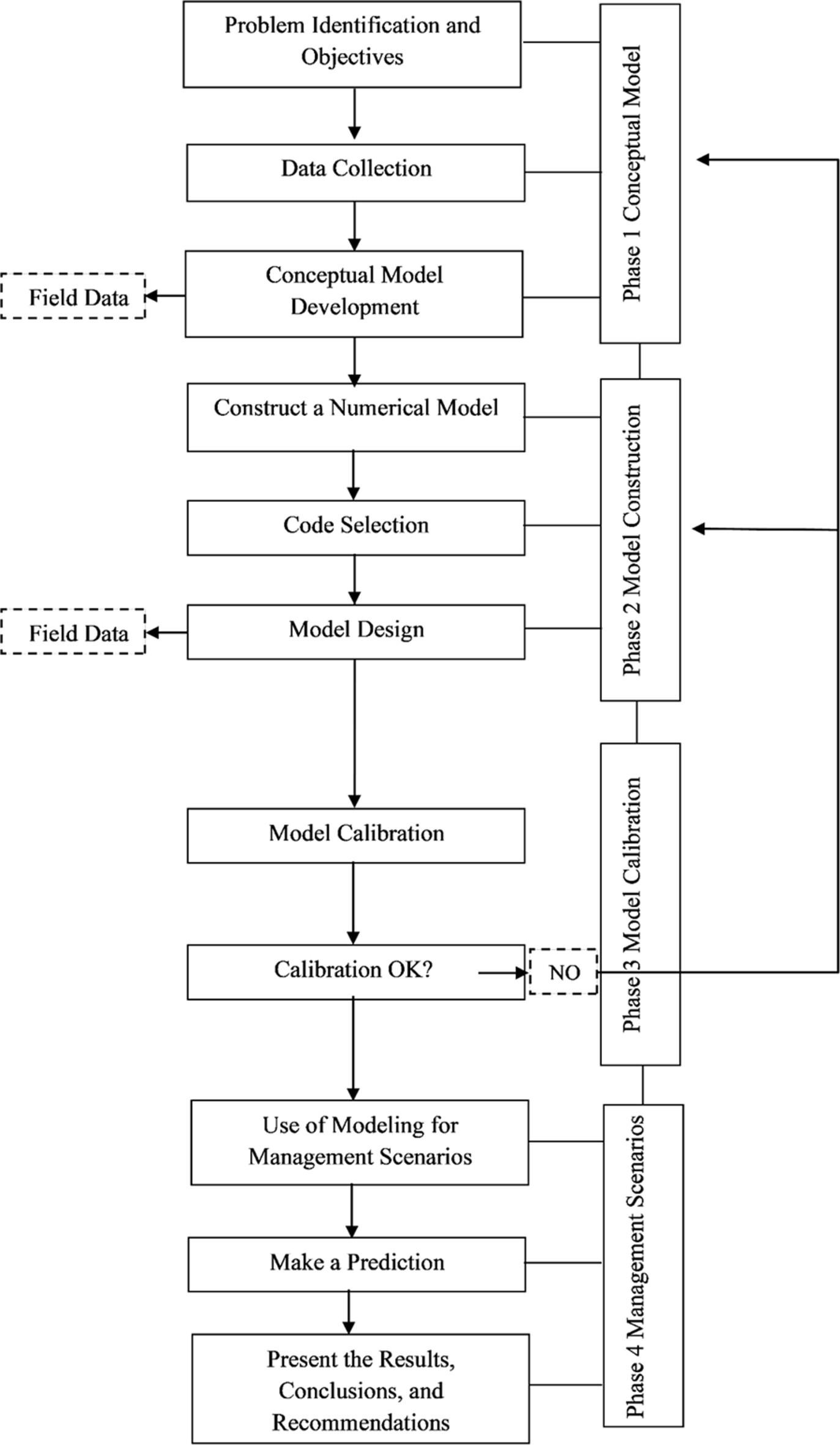
With a steadily growing population and increasingly scarce natural freshwater resources, water-scarce regions must implement smart interventions to sustainably manage their water resources. To address this issue, a modelling framework for Kuwait City's urban aquifer was developed using Groundwater Vistas software. This framework was employed to create a numerical model of the shallow aquifer beneath the urbanised aquifer of Kuwait City.
The Impact of Agricultural Land Cover Change on Soil Hydraulic Properties: Implications for Runoff Generation
- First Published: 11 March 2025
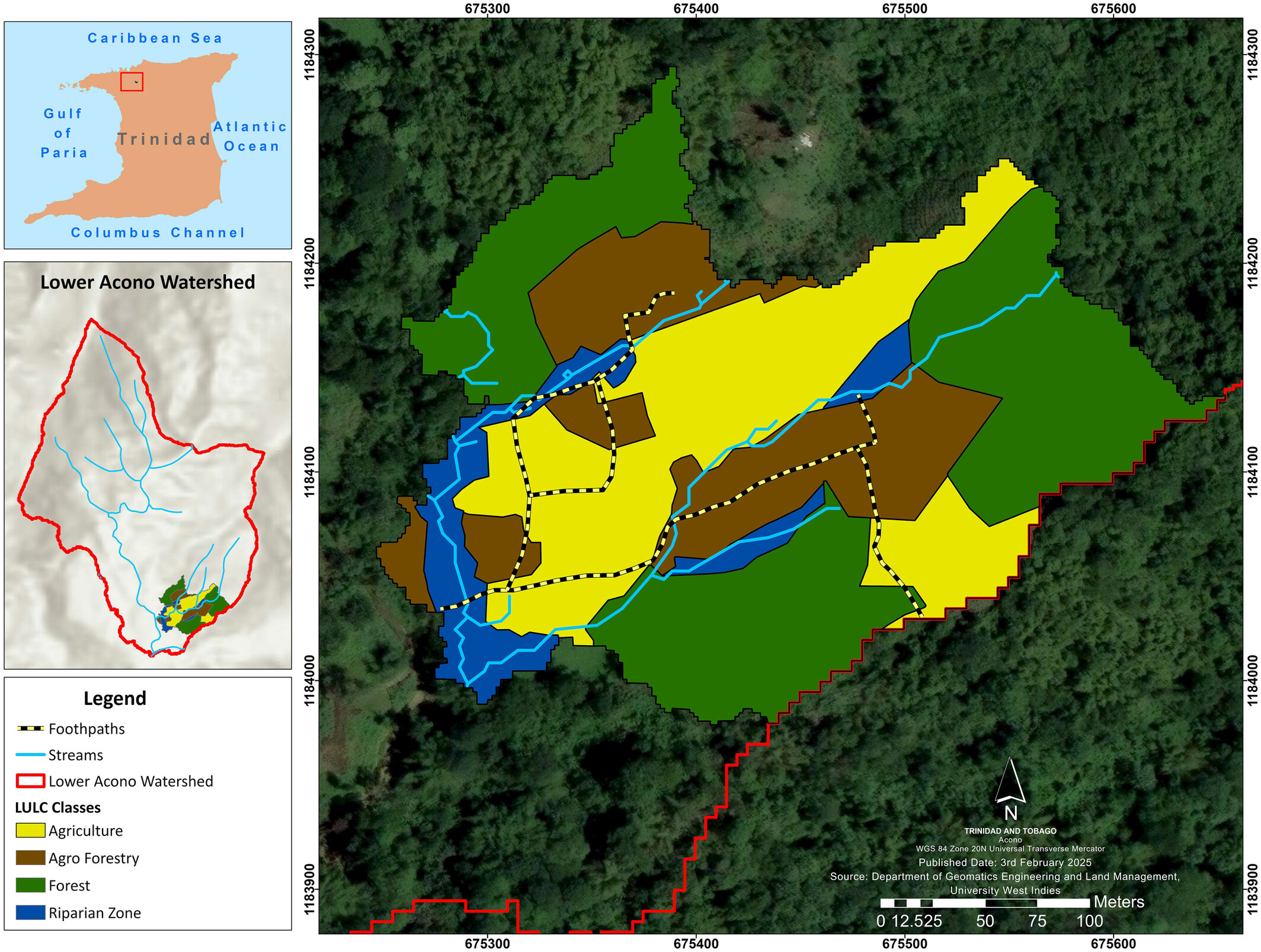
There were no significant differences in surface Kunsat between perennial crop cover and natural forests; however, agroforests did have significantly higher surface Kunsat than natural forests. There were no differences in K among land covers at depths 25 cm below the soil surface. This study shows that differences in crop type, management practices, and topographic location all play an important role in infiltration and K, highlighting the need for local field-based studies.
Understanding Hydrological Process Change due to Re-Vegetation in a Mountainous Watershed of Northern China
- First Published: 11 March 2025
Modelling of Total Phosphorus and Nitrate Using a Travel Time Approach in the Duck River Catchment, Australia
- First Published: 18 March 2025
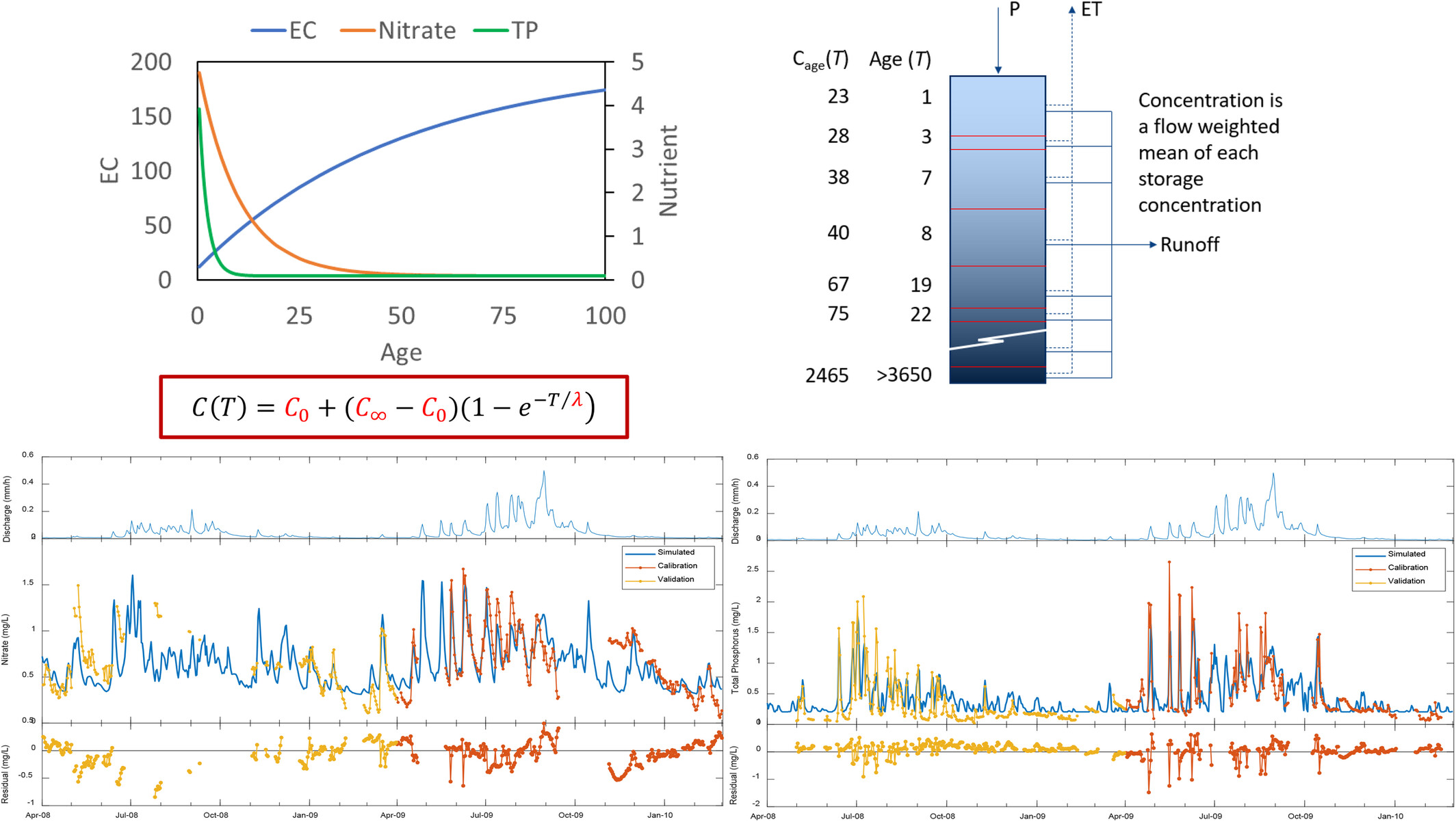
Nitrate and total phosphorus are simulated using a storage selection based travel time model calibrated against electrical conductivity combined with age-concentration relationships. This framework links runoff and transport responses. Concentrations decline with water age, likely as a result of soil leaching followed by denitrification for nitrate and the dominance of surface transport in the case of phosphorus.
Dynamic Baseflow Storage Estimates and the Role of Topography, Geology and Evapotranspiration on Streamflow Recession Characteristics in the Neversink Reservoir Watershed, New York
- First Published: 15 March 2025
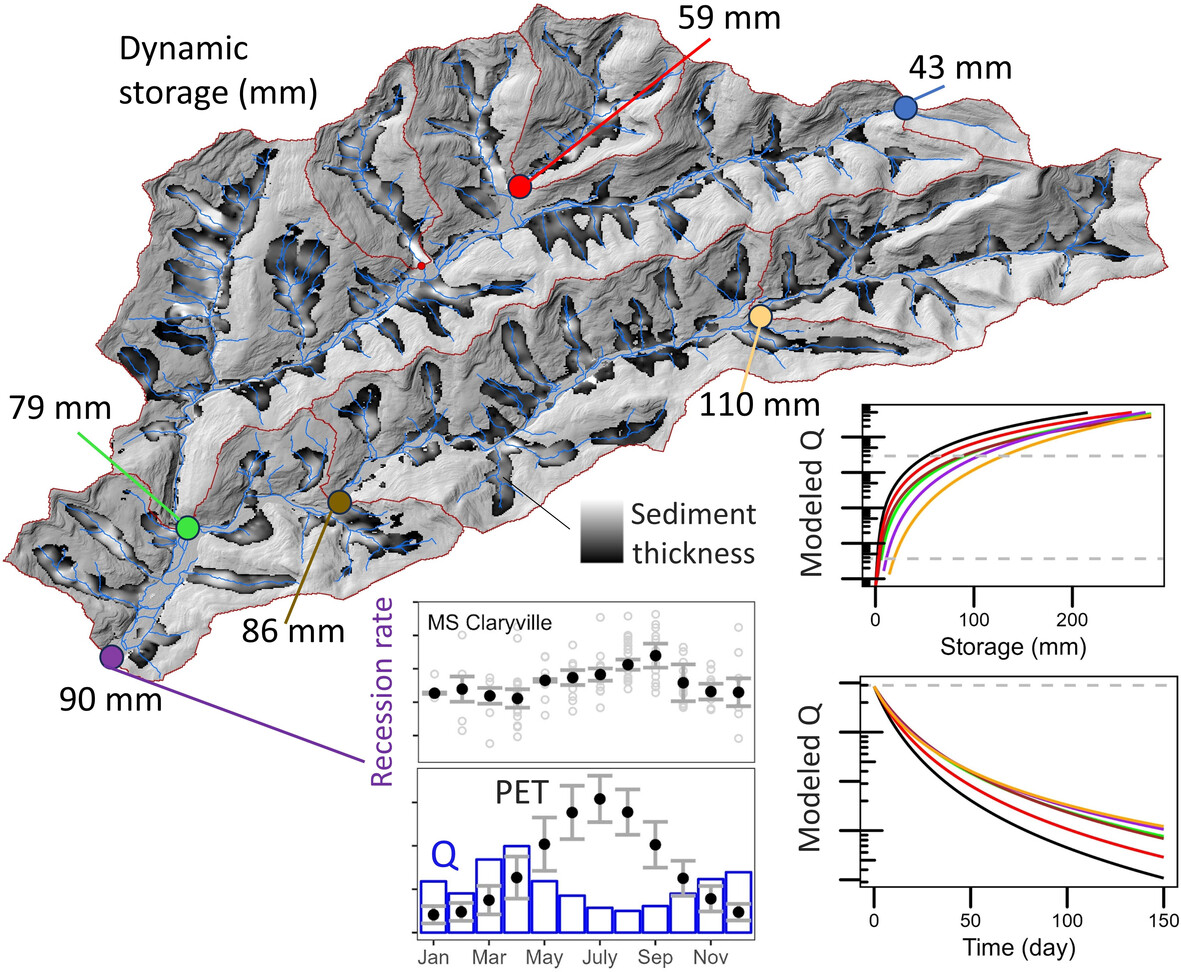
The relationship between total dynamic storage, topography, surficial geology, evapotranspiration and stream baseflow recession characteristics in a glaciated, headwater basin was investigated. Surficial geology metrics and stream channel gradients were stronger predictors of normalised storage volumes than catchment surface area or surface topography alone. The catchment storage to discharge relationship was highly nonlinear, and evapotranspiration exerted an indirect influence on the seasonality of baseflow recession behaviour.
Changes in Vegetation Phenology and Water Use Efficiency Driven by Warming and Wetting in Northwest China
- First Published: 18 March 2025
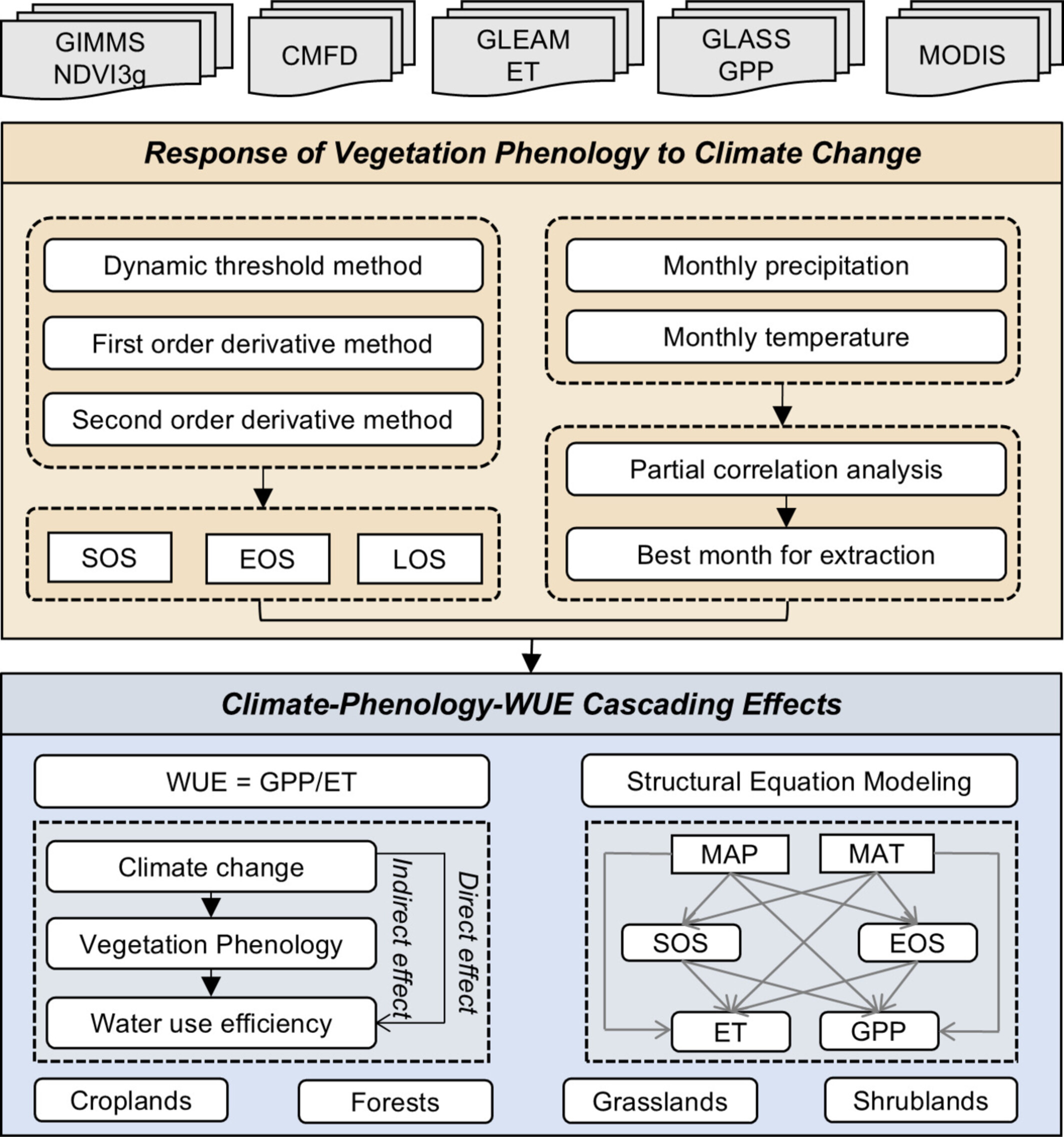
- Climate warming and wetting have extended the LOS by advancing the SOS and delaying the EOS, leading to an increase in the LOS of 0.08 days annually.
- Temperature primarily drives the SOS advance, while precipitation changes in croplands and grasslands and temperature shifts in forests and shrublands dictate the EOS delays.
- The cascade effects of climate change, phenological dynamics and water-use efficiency significantly enhanced vegetation water use efficiency in the NWC.
Impacts of the Grain for Green Project on Soil Moisture in the Yellow River Basin, China
- First Published: 19 March 2025

Our research revealed that the NDVI in the Yellow River Basin increased following the implementation of the Grain for Green Project. The decrease in surface soil moisture and total soil moisture was primarily observed in the upper and lower reaches of the YRB, whereas increases were mainly concentrated in the middle region. Additionally, we found that precipitation had the greatest impact on surface soil moisture, while temperature significantly influenced total soil moisture.
Mapping 2D Hydraulic Tomography: Comparison of Deep Learning Algorithm and Quasi-Linear Geostatistical Approach
- First Published: 21 March 2025
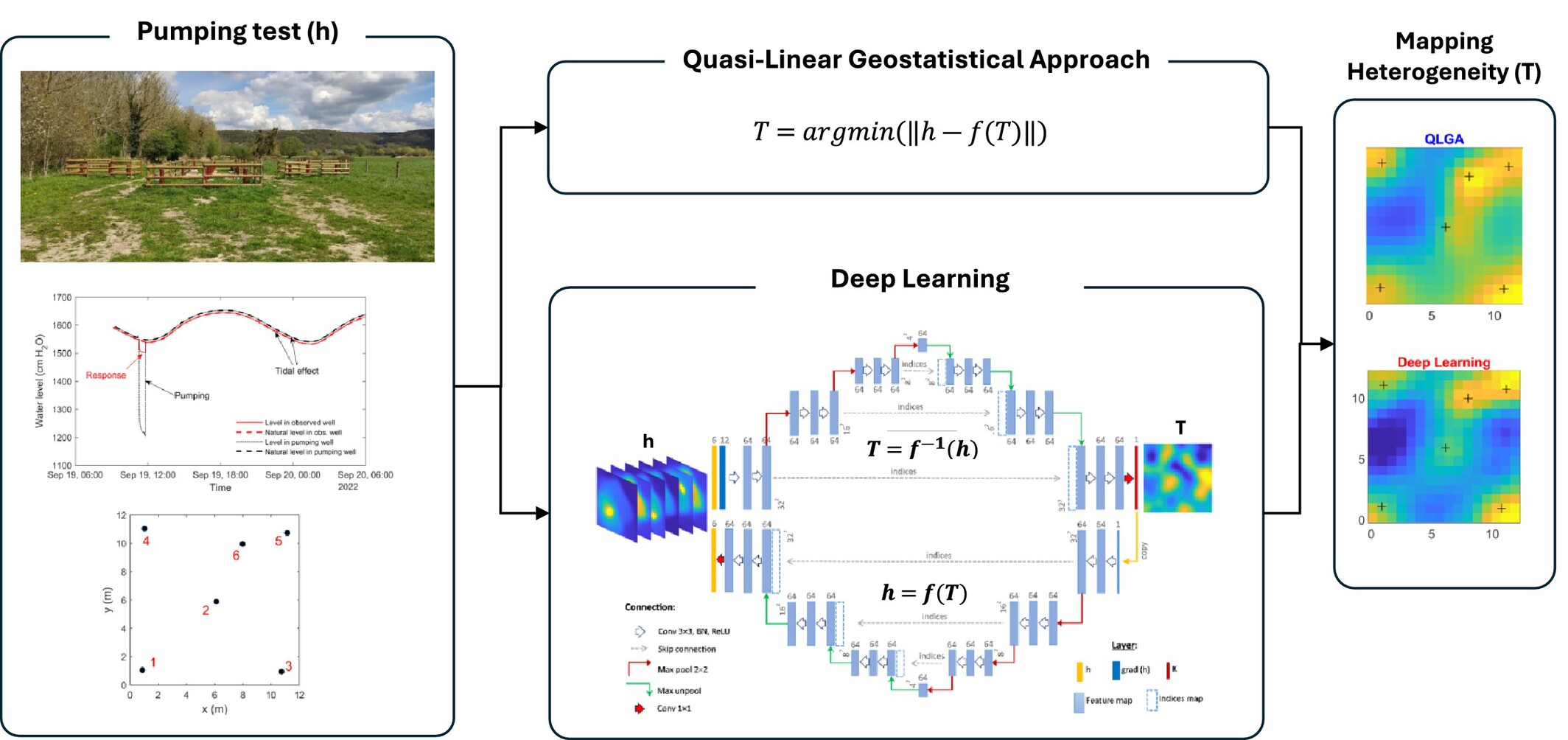
This study compares two advanced methodologies for 2D hydraulic tomography with a real field pumping test. We evaluate a process-based approach—Quasi-Linear Geostatistical Approach —and a data-driven approach utilising Convolutional Neural Networks. The QLGA method employs iterative linearization to minimise an objective function, while the CNN approach utilises a novel circular architecture to directly approximate operators, facilitating the assessment of heterogeneity and its response within a single solver. Results from both methods demonstrate their efficacy in capturing subsurface heterogeneity. The novelty here lies in the comparative analysis of two state-of-the-art methodologies for 2D hydraulic tomography, utilising a real dataset from multiple pumping tests at the Hydroscan observatory, Normandy. The research also introduces a novel neural network architecture that simultaneously solves both forward and inverse operators within a single solver.
REVIEW ARTICLE
James Buttle Review: The Characteristics of Baseflow Resilience Across Diverse Ecohydrological Terrains
- First Published: 15 March 2025
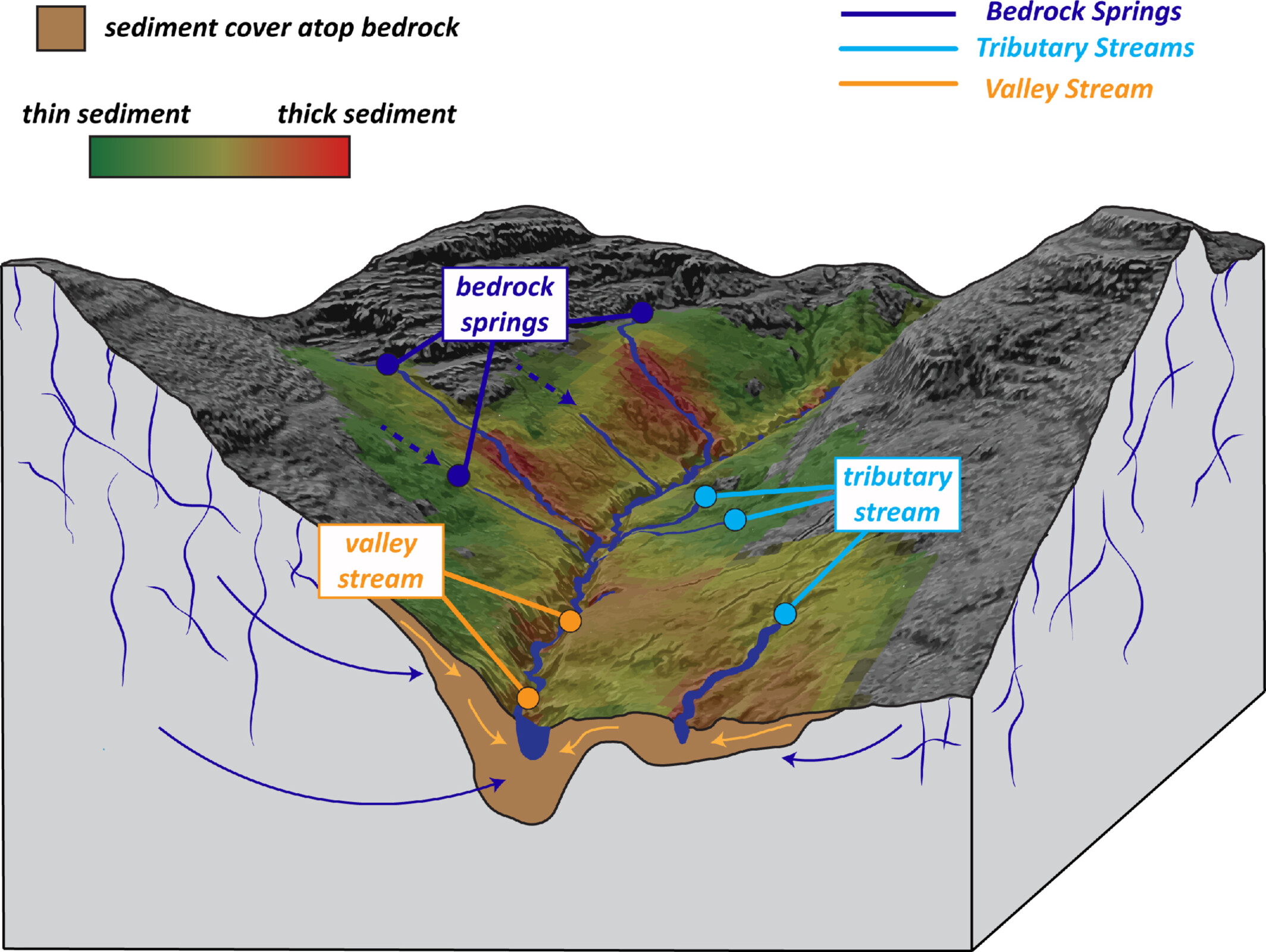
Dynamic storage of groundwater drains to streams via permeable geologic pathways. Land surface processes, source groundwater characteristics, and the spatial distribution of groundwater drainage areas across stream networks influence stream baseflow resilience at nested scales. Low flow magnitude, temperature, and water quality are components of baseflow resilience assessments, which can be conducted using a range of quantitative metrics.
CORRIGENDUM
Correction to “Variability of Stream Extents Controlled by Flow Regime and Network Hydraulic Scaling”
- First Published: 24 March 2025
COMMENTARY
Working Ever Faster—Or the Curious Case of Horton (1940)
- First Published: 18 March 2025
RESEARCH ARTICLE
Spatiotemporal Evolution of Forest Road Rutting and Flow Pathways Examined Using Unoccupied Aerial Vehicles (UAVs)
- First Published: 18 March 2025
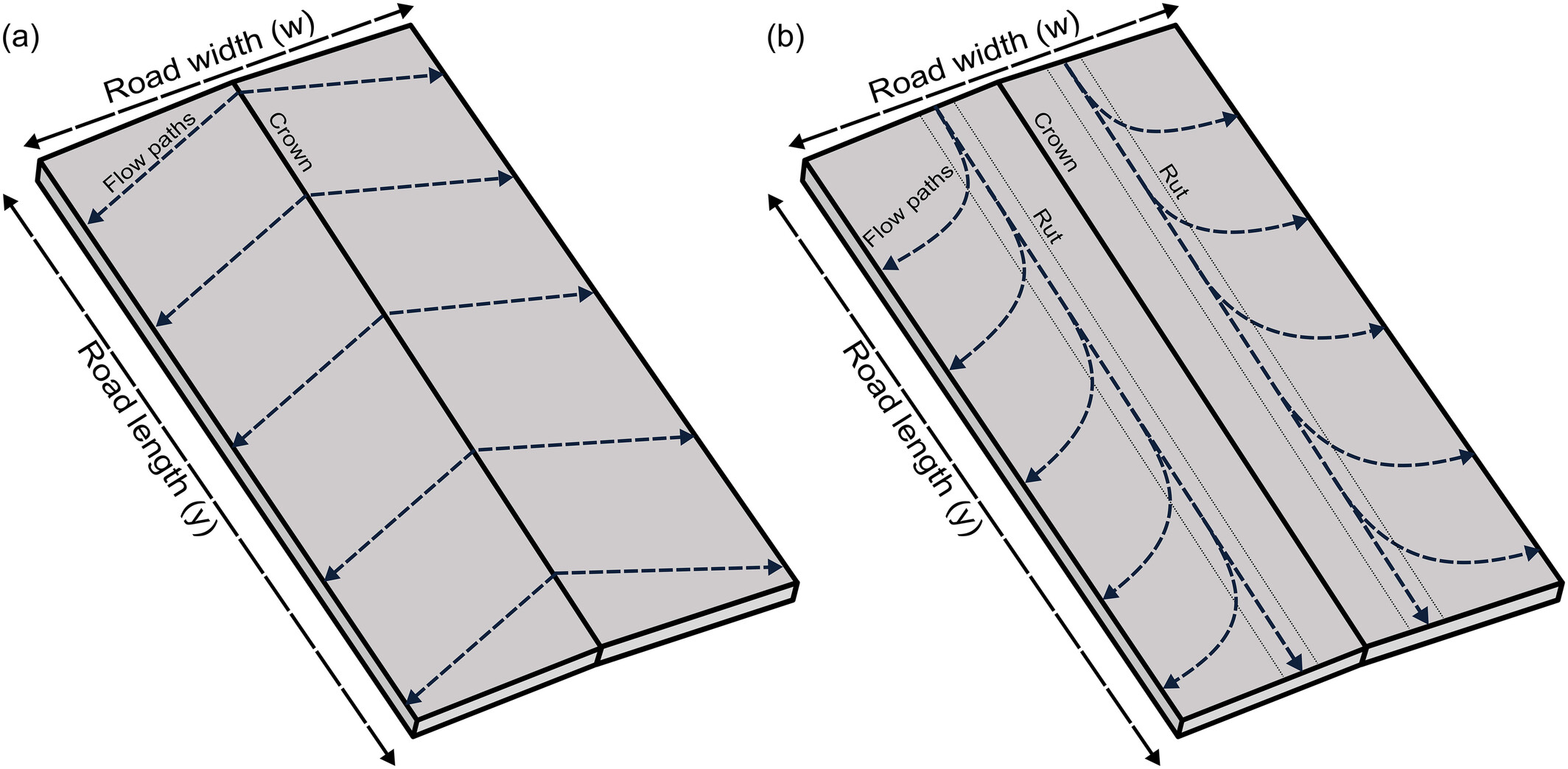
In western Washington, the spatiotemporal evolution of forest road ruts and flow pathways is examined using unoccupied aerial vehicle (UAV) structure-from-motion (SfM). Results demonstrate that as ruts develop, the flow pathways shift down-road, diverting sediment-laden road surface runoff away from treatment in grassy ditches, and the hydraulically controlled erosion potential of the road surface increases. These results have implications for forest road sediment yield.
Spatial and Temporal Variation in the Three Main Hydrological States of Temporary Streams in a Swiss Pre-Alpine Catchment
- First Published: 24 March 2025
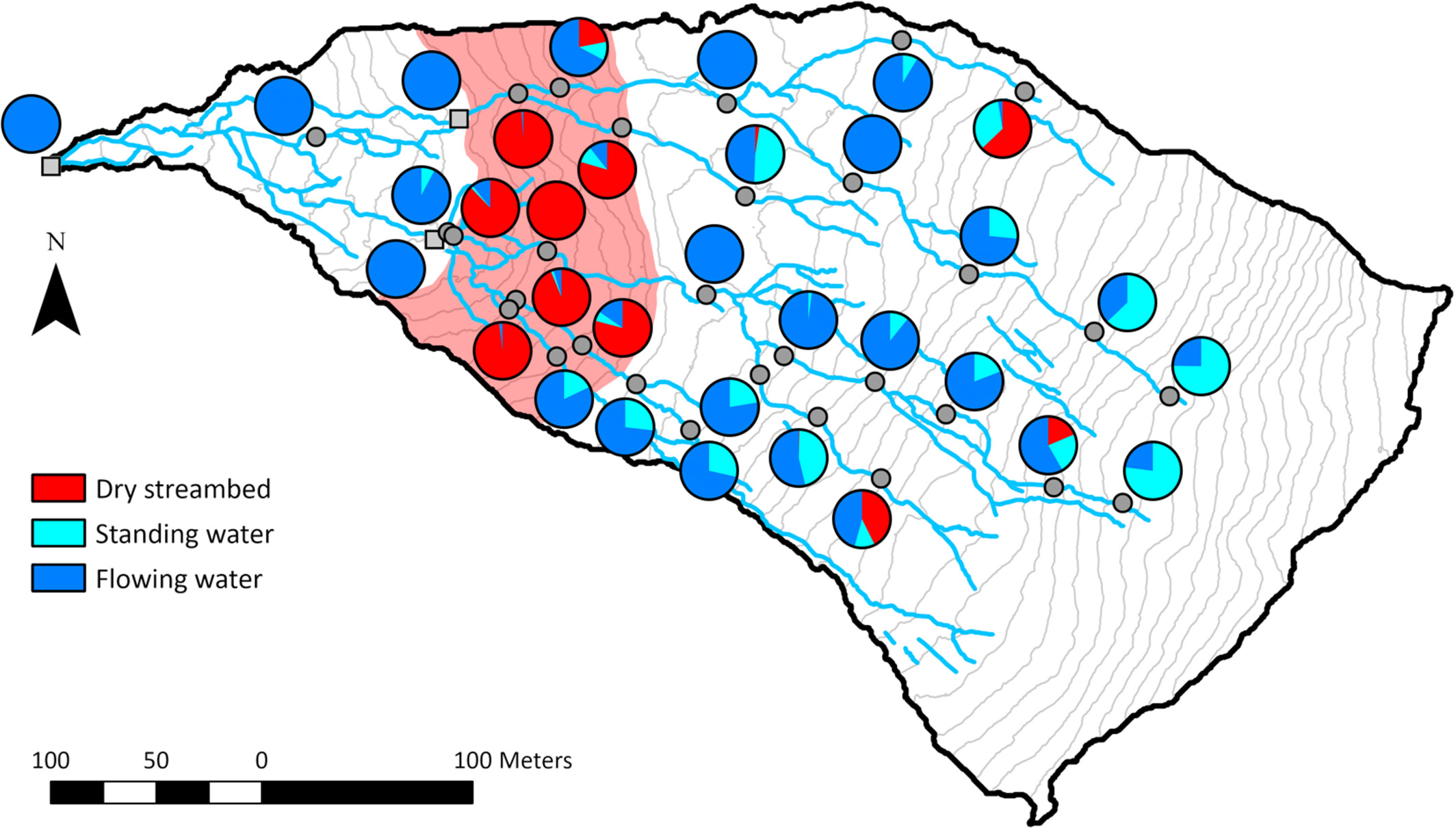
The variation in the permanence of a dry streambed, standing water, or flowing water in the streams across the catchment was related to topography, geology, and channel morphology. The variation in the timing of the changes between these hydrological states for different precipitation events was related to precipitation characteristics and soil moisture conditions. The dominance of the three states in separate parts of the catchment underlines the value of distinguishing between these states. Monitoring only wet and dry states would have severely underestimated the temporary stream dynamics in the catchment.




